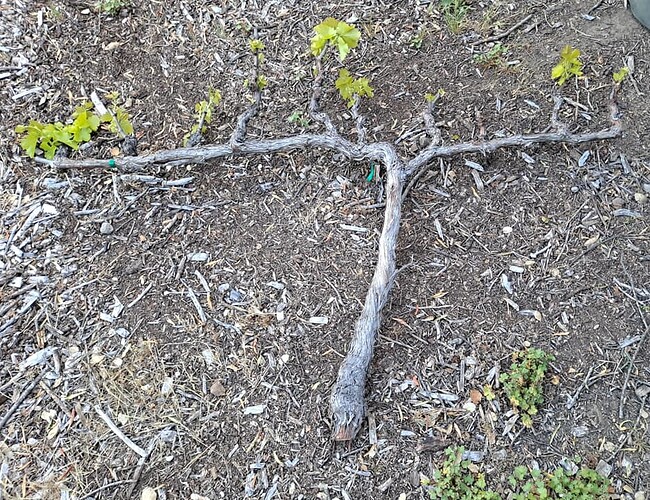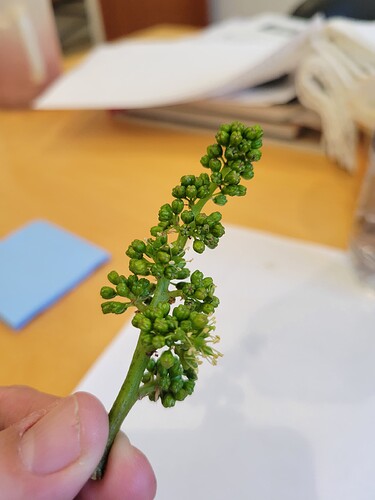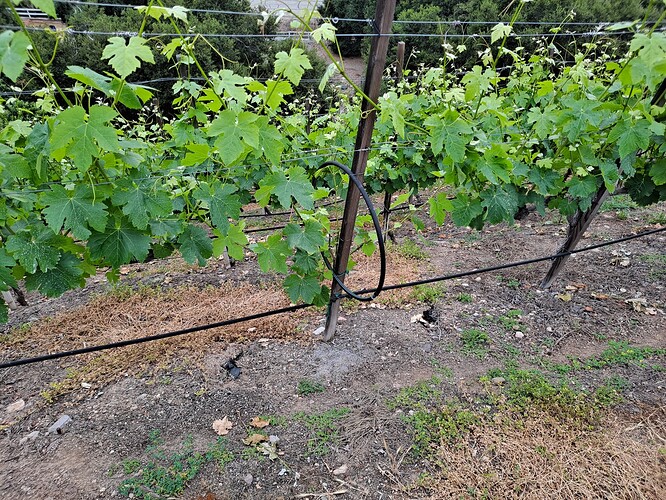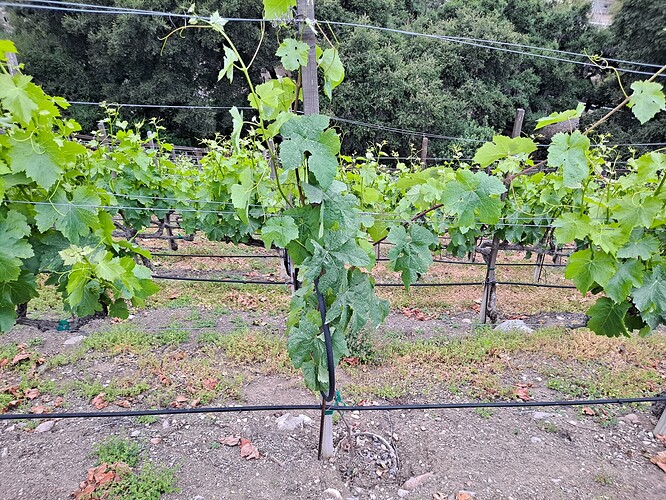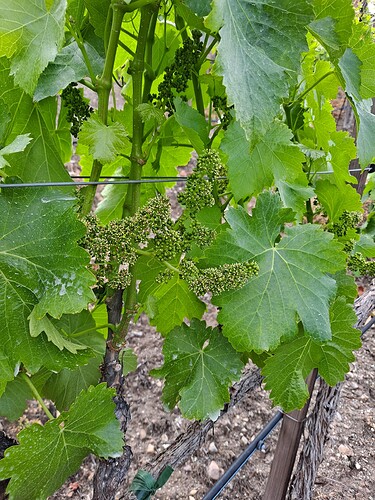Lots of vineyards still have lots of water in their root areas. Vines will not grow normally if they have 'wet feet’s. There’s always different molds and mildews that can effect vines on very wet springs. Also many fields are too wet to get any spray equipment in.
Come on people! Content please!
It’s beautiful mid-spring weather ![]() a small system will pass through next few days, maybe drop a little light rain up north. My guess is we are past any risk of frost. Looks like a good start to the growing season.
a small system will pass through next few days, maybe drop a little light rain up north. My guess is we are past any risk of frost. Looks like a good start to the growing season.
Spring has sprung
Fall has fell
Summer’s here
And it’s hotter than usual
(or not)
In recent years, my part of California has seen probably less cold in the winter, somewhat erratic rain (but great to average past two years), and summer temperatures that generally aren’t much higher even while other parts of the country have seen larger changes. I think the main change in most of the temperate months is that the morning temperatures used to be lower (this is over past 20 years or so, although it’s more from memory than any analysis).
In my area, it could change very quickly if the fog patterns near the coast were to change.
-Al
we’ve now had three straight years at or above average
thanks, I hate this
Bump
Somewhat growing related: do many of you get Pierce’s disease? Here in Ventura County CA the glassy-winged sharpshooter is everywhere and vectors PD. (Up North it is mostly seen near riparian areas, vectored by blue-green sharpshooters) Spread of PD is hard (impossible) to prevent. We spray imidacloprid (in with mildew sprays) and periodically apply imidacloprid granules to the root zone. We’ve put out lacewing eggs (one of the instars is insectivoric) and have a few bluebird nest boxes.
Despite these efforts we still see sharpshooters and still get sick vines. Our Syrah seems more resistant but lately we lose 1-2 Grenache per year. Vines have to be removed when symptoms develop because the xylella bacteria are spread by sharpshooters feeding on sick vines. Here is (was) a sick Grenache I removed last week:
Trying not to pull my shoulder out of socket, patting myself on the back for carrying the weather thread with great content on what it takes to produce a crop of grapes each year. I loved what I did and with the urging of a friend enjoyed sharing the journey of a grape grower. It’ll never be the same…and that’s how things go.
Something for Casey (or any other aspiring viticulturist):
As mentioned we lose vines to Pierce’s disease. Replants don’t do that well, (I think) because (as in the big city) adjacent adult vines steal water from the baby replants. Here is a syrah replanted about 6 years ago. As you can see it is weak and not ready for childbearing:
Here is a different replant in the Grenache section that went in two years ago:
$1 prize for correct answer to: What is this vine and why is it doing so well?
It has a darker shade of green than the other vines. I’d say Carignane.
That’s a step in the right direction, but no. Actually it is a PD resistant varietal developed by Dr Walker: “Passaente Noir”
I think the reason it is strong is unrelated to this, however.
Ojai is making wine from several of the Pierce’s disease resistant varieties, including Passeante Noir (his original vineyard was lost to Pierce’s disease years ago).
-Al
OK since you guys are too busy working in the vineyard, I believe the explanation the second replant is doing better have to do with water: The other (original) Grenache vines are on rootstock (101-14), which in hindsight was a mistake. This is a devigorating rootstock that we chose because of clay soil, but we didn’t anticipate multi-year drought and a more water-efficient rootstock would have been better. The replanted Passaente vine is own-rooted, so in addition to not being on 101-14 the lack of a graft union likely makes for better water uptake and vigor.
The second reason has to to with the observation that adjacent vines steal water from baby replants. For this replant I used a biodegradable cardboard pot to help keep drip water around the baby’s roots while keeping out nearby thieves. You can see the edge of the pot in the picture.
Obviously this is not a controlled experiment* but I think these reasons give a logical explanation.
*Such as replanting own-rooted Grenache to evaluate the effect of rootstock / graft union, or replanting Grenache/101-14 without the cardboard pot to check that effect
Bump
Bloom started in our Grenache about 10 days ago. The fragrance is faint, sweet, and reminds me of something blue. Lots of work lately suckering and training shoots up into the trellis (VSP). So far very mild year - overcast in the morning until about 11 then sunny 70s. Risky heat waves usually come in sept/oct, though in past years as early as June (resulting in sunburn, fried clusters, etc).
Hope springs eternal ![]()
Perhaps I spoke too soon on moderate temps…
Survive the heat?
